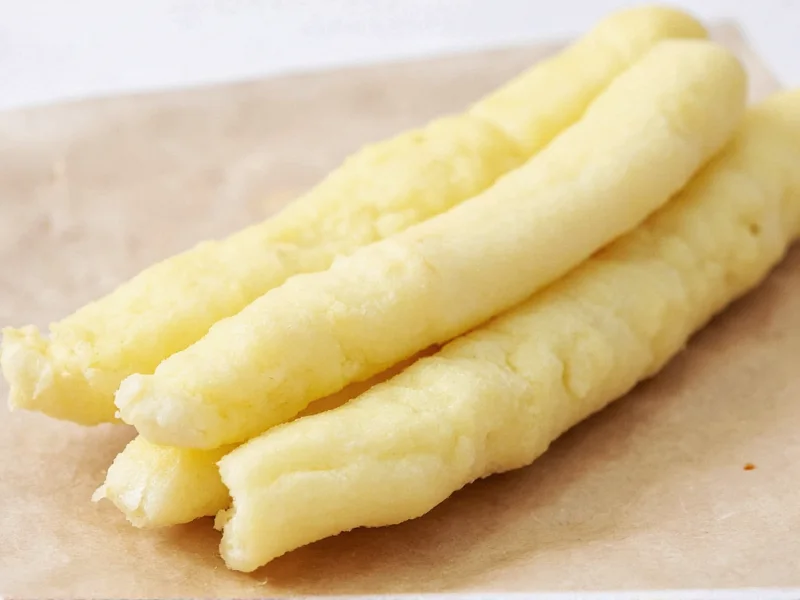Understanding what does horseradish taste like requires experiencing its unique sensory profile. This root vegetable's flavor isn't just spicy—it's a complex experience that engages multiple senses simultaneously. The heat doesn't linger like capsaicin from peppers but instead creates an immediate, sharp burst that clears your sinuses before dissipating within seconds.
The Science Behind Horseradish's Distinctive Flavor
Horseradish's signature heat comes from allyl isothiocyanate, a volatile compound released when the plant's cells are damaged through grating or cutting. This chemical reaction occurs between myrosinase enzymes and glucosinolates naturally present in the root. Unlike capsaicin in chili peppers that binds to pain receptors on the tongue, allyl isothiocyanate primarily stimulates the trigeminal nerve in your nasal passages, explaining why horseradish creates that characteristic 'upward' heat sensation.
Interestingly, the intensity of fresh horseradish taste characteristics depends significantly on preparation. When left exposed to air, the compounds continue reacting, initially increasing heat for about 30 seconds before gradually mellowing. Adding vinegar halts this process, preserving the desired heat level—this is why prepared horseradish contains vinegar.
Horseradish vs. Wasabi: Clearing the Confusion
Many people confuse horseradish with wasabi, but their flavor profiles differ substantially. True wasabi (Wasabia japonica) has a more delicate, complex flavor with subtle sweetness and less intense heat that dissipates even faster. Most "wasabi" served outside Japan is actually horseradish dyed green with food coloring, which explains why many expect a similar taste experience.
| Characteristic | Horseradish | True Wasabi |
|---|---|---|
| Primary Heat Sensation | Nasal passage focus | Brief tongue sensation |
| Heat Duration | 30-60 seconds | 15-20 seconds |
| Flavor Complexity | Earthy, mustard-like, slightly bitter | Grassy, subtle sweetness, oceanic notes |
| Availability | Widely available year-round | Seasonal, expensive, rare outside Japan |
How Preparation Affects Horseradish Flavor
The question what does prepared horseradish taste like versus fresh reveals significant differences:
- Freshly grated horseradish: Maximum heat intensity with complex earthy notes, best used immediately
- Vinegar-stabilized horseradish: Milder, more consistent heat with tangy undertones from the vinegar
- Creamed horseradish: Significantly mellowed heat with creamy texture balancing the sharpness
- Cooked horseradish: Heat diminishes substantially when exposed to heat, leaving primarily earthy flavor
Chefs seeking how to describe horseradish taste in cooking should note that its flavor transforms dramatically with preparation. The moment you stop grating and add vinegar determines the final heat level. Waiting 30 seconds before adding vinegar creates maximum heat, while immediate vinegar addition yields a milder product.
Culinary Applications That Showcase Horseradish Flavor
Understanding what horseradish tastes good with helps maximize its unique properties in cooking:
- Beef pairings: The classic horseradish sauce cuts through rich beef flavors, particularly with roast beef or prime rib
- Seafood enhancement: Adds complexity to seafood sauces without overwhelming delicate fish flavors
- Cocktail enhancement: A small amount transforms Bloody Marys with sinus-clearing heat
- Vegetable accompaniment: Complements roasted root vegetables like carrots and parsnips
When working with horseradish, remember that why does horseradish taste different than wasabi comes down to their distinct chemical compositions. While both contain isothiocyanates, the specific compounds and their concentrations create uniquely different sensory experiences.
Handling Tips for Optimal Flavor Experience
To fully appreciate what fresh horseradish tastes like, follow these professional handling techniques:
- Grate using a stainless steel grater (carbon steel can discolor the root)
- Work in a well-ventilated area or near running water to minimize eye irritation
- Use immediately for maximum heat or stabilize with vinegar for consistent flavor
- Store prepared horseradish in an airtight container in the refrigerator for up to 4 weeks
Many home cooks wonder does horseradish taste like mustard—while both belong to the Brassicaceae family and share some flavor compounds, horseradish delivers a cleaner, more intense heat without mustard's characteristic tang. The earthy undertones do create some similarity, especially in prepared forms.
Common Misconceptions About Horseradish Flavor
Several myths persist about what horseradish actually tastes like:
- Myth: Horseradish heat comes from the same compound as chili peppers
Fact: Capsaicin (peppers) affects tongue receptors; allyl isothiocyanate (horseradish) affects nasal passages - Myth: Wasabi and horseradish are the same plant
Fact: They're related but distinct species with different flavor profiles - Myth: The longer you leave horseradish exposed, the hotter it gets
Fact: Heat peaks at 30 seconds then gradually decreases as compounds break down
Understanding these distinctions helps explain why how would you describe horseradish taste requires more nuance than simply calling it "spicy." Its flavor profile includes earthy, slightly bitter notes with a heat that's intense but fleeting—a characteristic that makes it invaluable in culinary applications where you want impact without lingering burn.











 浙公网安备
33010002000092号
浙公网安备
33010002000092号 浙B2-20120091-4
浙B2-20120091-4